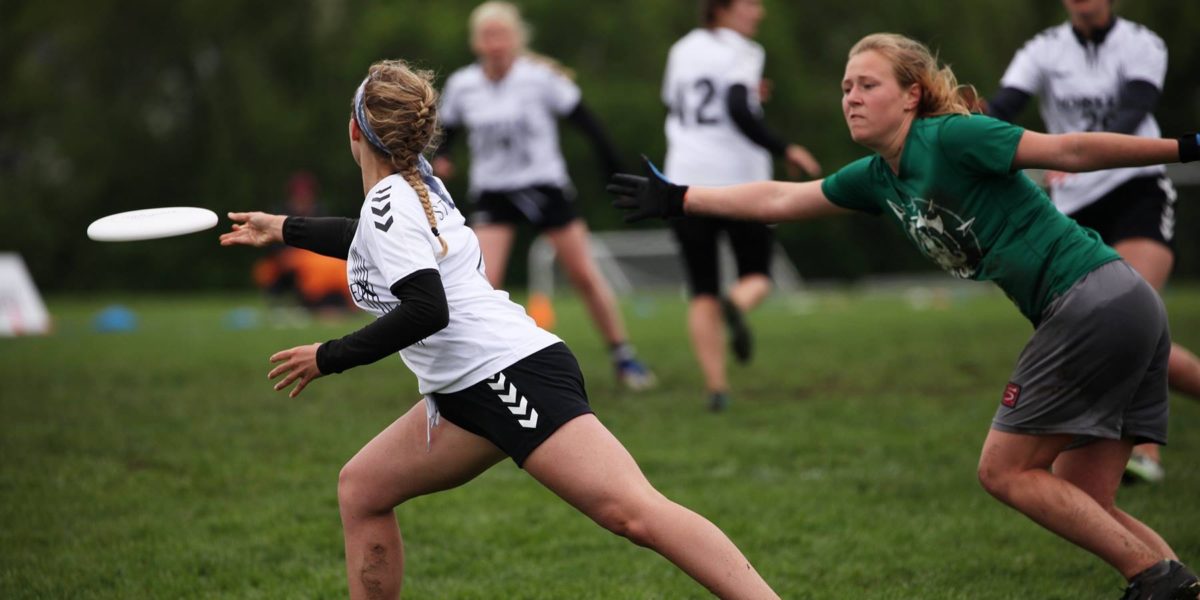 Photo by Cathy Zielski
Photo by Cathy Zielski
An experienced athlete rarely thinks about how their feet move to get from point A to B. They cut so smoothly you hardly even notice what is going on below their knees. On the other hand, a new athlete looks… awkward. Tripping over their own feet, losing their balance, it’s hard for them to sufficiently drop their hips and adjust to running in any direction. It becomes very evident that they aren’t proficient in those moves.
While all athletes can increase their speed by isolating and drilling these movements, the need is slightly more urgent for newer athletes. Breaking down defensive footwork to its elements helps athletes move more fluidly, confidently, and quickly. I’ve identified six main movements to teach your defenders: the cross-over step, the jab step, the bail run, the drop-step, the backpedal, and the shuffle.
Shuffle
A well-known lateral movement, used while marking a thrower, or adjusting your position to stay in front of a cutter.
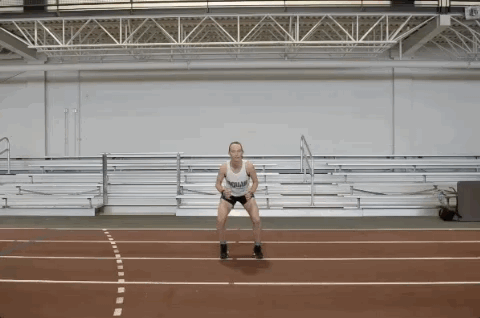
Bail run
A bail run is essentially running in one direction while keeping your shoulders facing another. It’s a balance between the top speed of a sprint with the responsiveness of a shuffle. You rarely get faster than the acceleration phase of a sprint, so hips are generally pretty low, especially while changing direction.
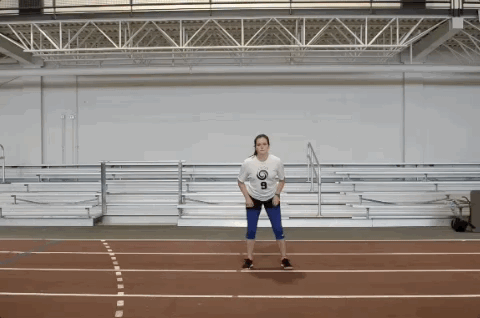
Jab step
We all use a jab step whether or not we realize it, and gaining power in that position can prevent injuries and make us move faster. It’s generally used for turning less than 60 degrees.
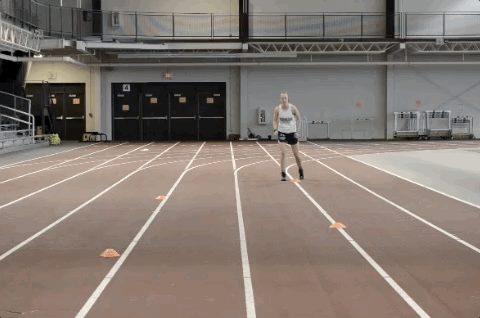
Crossover step
The crossover step is a key part of offensive cutting. If you are making a sharp turn and know where you want to go, the crossover step is the quickest way to get there. Here’s the crossover step isolated:
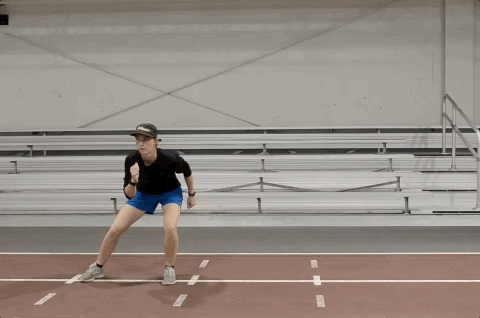
Drop-step and Backpedal
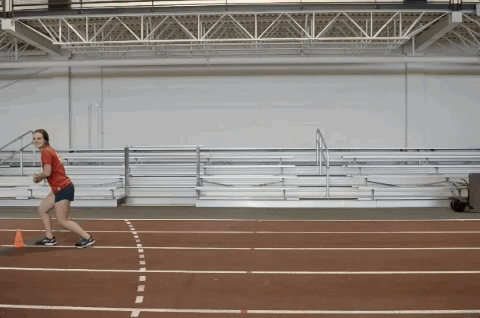
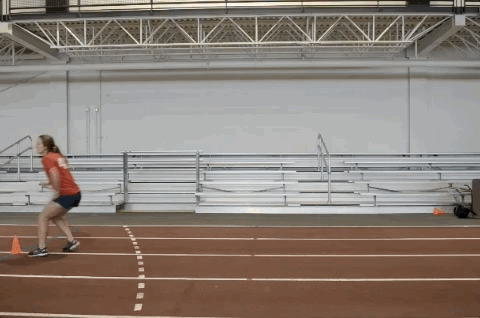
Help me out here, but I’m not sure if “drop-step” is the proper term. It’s very different than the single step that most ball sports call by the same name. It’s almost more of backwards shuffle, in that it pushes off of a dominant foot. While both are used to go backwards, the backpedal is generally a bit faster, especially over distance. The drop-step on the other hand, is easier to balance and less likely to have you caught on your heels (thereby allowing you to change direction more quickly). I’d love to hear if you prefer one over the other, and why.
Even after a decent amount of practice, athletes might look or feel clumsy transitioning between movements. Inflexible hips are often to blame. As they say, “stiff hips sink championships.” This is usually a coordination issue rather than a mobility issue, and you can use carioca or make up a ladder drill to address it. Remind the athletes to keep their shoulders squared in one direction while their hips move under them. Alternatively, take salsa classes or learn a Shakira choreography as a team.
There are plenty of decent drills that will isolate the movements (see “Drills and Cues” below), but eventually you’ll want to create drills that combine a variety of movements so athletes can fluently move from one to the next without having to overthink a transition. My favorite way to do this is to put four cones in a square eight meters apart and prescribe a pattern with the specific footwork to be used for each line. Here are a couple examples:
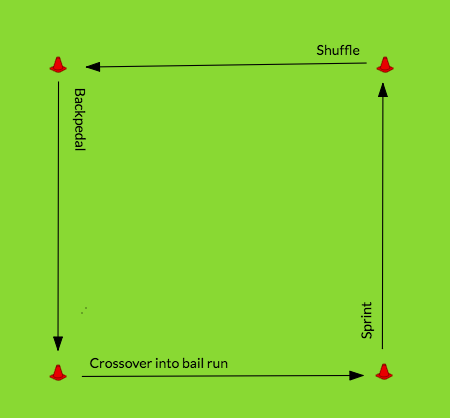
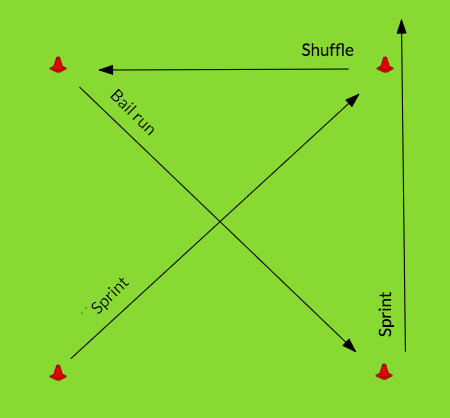
As a coach, it’s your job to recognize awkward footwork, see what specific movement needs work, and incorporate that into your drills. For example, in the 1v1 cutting drill below, I see the defender shuffling into a crossover and using a bail run to square up to her mark, so I would incorporate those into our box drills for practice that week.
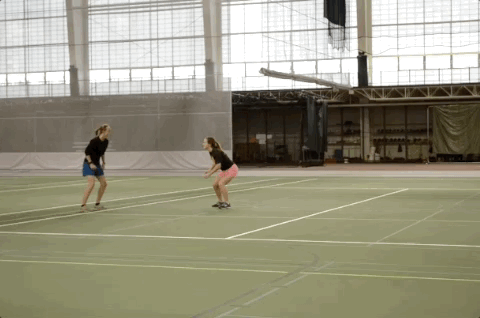
There are so many ways to combine these movements into drills. Good luck dropping your hips, moving your feet, and shutting down cutters!
| Drills and Cues | |
| Shuffle | Cues: toes forward, short quick steps, hips low |
| Drills: shuttles, mirror drills | |
| Bail Run | Cues: run forward naturally, while looking at your partner, drop hips into turns |
| Drills: shuttles, mirror drills, reverse serpentine | |
| Jab Step | Cues: drive your leg, push off the ground |
| Drills: power skips, lateral power skips, ickey shuffle, narrow serpentine | |
| Crossover Step | Cues: low hips, push off the ground, drive your swing knee forward |
| Drills: 90-degree starts, 180-degree change of direction, wide serpentine | |
| Drop Step, Backpedal | Cues: hips low, weight on the balls of feet, short quick steps |
| Drills: shuttles, sideways serpentine | |
Further reading:










Comments Policy: At Skyd, we value all legitimate contributions to the discussion of ultimate. However, please ensure your input is respectful. Hateful, slanderous, or disrespectful comments will be deleted. For grammatical, factual, and typographic errors, instead of leaving a comment, please e-mail our editors directly at editors [at] skydmagazine.com.